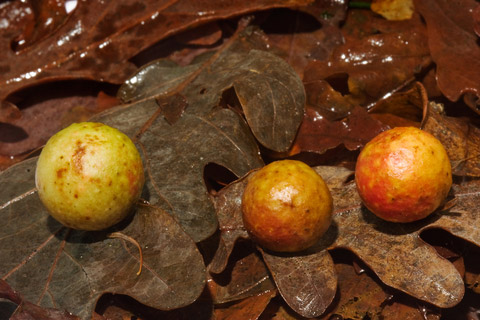What Are Oak Apple Galls? | Gardening Question
Have you ever noticed Ping-Pong-sized balls dropping from oak trees? Find out how these “oak apple galls” form and if they’re a threat to the tree.

Coffee By Design | Portland, Maine
Photo Credit : Katherine KeenanI’m surrounded by oak trees here, and last year I noticed numerous solid, Ping-Pong-sized balls dropping from them. Does this happen every so often, or is it a fluke of nature? — M.G., Wilmington, MA

Photo Credit : Dreamstime
You’re describing “oak apple galls,” which commonly form on oak trees and sometimes on plants in the willow and rose families. What are oak apple galls? They’re actually deformed leaves that have been modified by secretions from the larvae of a tiny, stingless gall wasp species, Amphibolips confluenta. In the spring, a female wasp injects an egg into an oak-leaf bud; after the larva hatches, the gall structure begins to develop, protecting and nurturing the immature wasp until it emerges as an adult in June or July. The gall is green and spongy at first during the insect’s larva and pupa stages; it becomes brown and papery after the adult emerges in summer, and eventually drops off the tree in fall or winter.
The oak apple gall wasp is considered a minor pest; it causes minimal damage to the health of the tree, although infestations may look unsightly. Heavy populations may cause early leaf drop. Minor occurrences may be managed by picking the galls off by hand, but you have to do it before the adult emerges, or the cycle may repeat. Chemical controls aren’t necessary or even very effective.
For more information, visit the U.S. Department of Agriculture’s Forest Service Web site at fs.fed.us and type “oak apple gall” into the search box. — R. Wayne Mezitt, Chairman, Weston Nurseries, Hopkinton, MA
This post was first published in 2013 and has been updated.
SEE MORE
How to Keep Squirrels Out of Bird Feeders
How to Get Rid of Skunk Odor
How to Keep Raccoons Out of Garbage Cans







